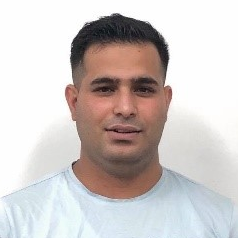Nanomaterials Based Electrodes for Supercapacitor Applications
A special issue of International Journal of Molecular Sciences (ISSN 1422-0067). This special issue belongs to the section "Materials Science".
Deadline for manuscript submissions: closed (30 June 2023) | Viewed by 2477
Special Issue Editor
Interests: energy storage and conversion applications; wastewater treatment
Special Issues, Collections and Topics in MDPI journals
Special Issue Information
Dear Colleagues,
Owing to the massive consumption of fossil fuels and mushrooming environmental concerns, multifarious emerging energy sources has being explored, and it is thus urgent to design alternative and sustainable energy storage devices. Among the diverse of energy storage devices, supercapacitors have proclaimed much attention thanks to their fast charging capability, high power density, and ultra-long cycle life. Particularly, the hybrid supercapacitors (HSCs), as a typical supercapacitor, is starting to receive enormous attention from researchers due to its excellent energy density and high power density. Therefore, it is crucial to design and develop high specific capacitance and widened potential window based electrode materials. To date, various nanomaterials including transition metal based oxides, sulfides, selenides hydroxides, phosphides, conductive polymers etc. have been exploited as pseudocapacitive electrode materials, and these electrode materials operates via faradic reactions. On the other hand, carbon based electrode materials (carbon nanotubes, graphene, activated carbon etc.) are named as electric double layer capacitors (EDLCs) and store the charges through ion-adsorption at the electrode/electrolyte interface. Therefore, it is highly recommend to assemble the pseudocapacitive and EDLCs nanomaterials in a single frame to design and develop high-performance hybrid supercapacitors (HSCs) with high energy density and power density.
Dr. Ojha Gunendra Prasad
Guest Editor
Manuscript Submission Information
Manuscripts should be submitted online at www.mdpi.com by registering and logging in to this website. Once you are registered, click here to go to the submission form. Manuscripts can be submitted until the deadline. All submissions that pass pre-check are peer-reviewed. Accepted papers will be published continuously in the journal (as soon as accepted) and will be listed together on the special issue website. Research articles, review articles as well as short communications are invited. For planned papers, a title and short abstract (about 100 words) can be sent to the Editorial Office for announcement on this website.
Submitted manuscripts should not have been published previously, nor be under consideration for publication elsewhere (except conference proceedings papers). All manuscripts are thoroughly refereed through a single-blind peer-review process. A guide for authors and other relevant information for submission of manuscripts is available on the Instructions for Authors page. International Journal of Molecular Sciences is an international peer-reviewed open access semimonthly journal published by MDPI.
Please visit the Instructions for Authors page before submitting a manuscript. There is an Article Processing Charge (APC) for publication in this open access journal. For details about the APC please see here. Submitted papers should be well formatted and use good English. Authors may use MDPI's English editing service prior to publication or during author revisions.
Keywords
- supercapacitors
- hybrid supercapacitors
- energy density
- power density
- specific capacitance
- pseudocapacitors
- electric double layer capacitors (EDLCs)
- nanomaterials
- cyclic stability






